Common Tern
(Sterna hirundo).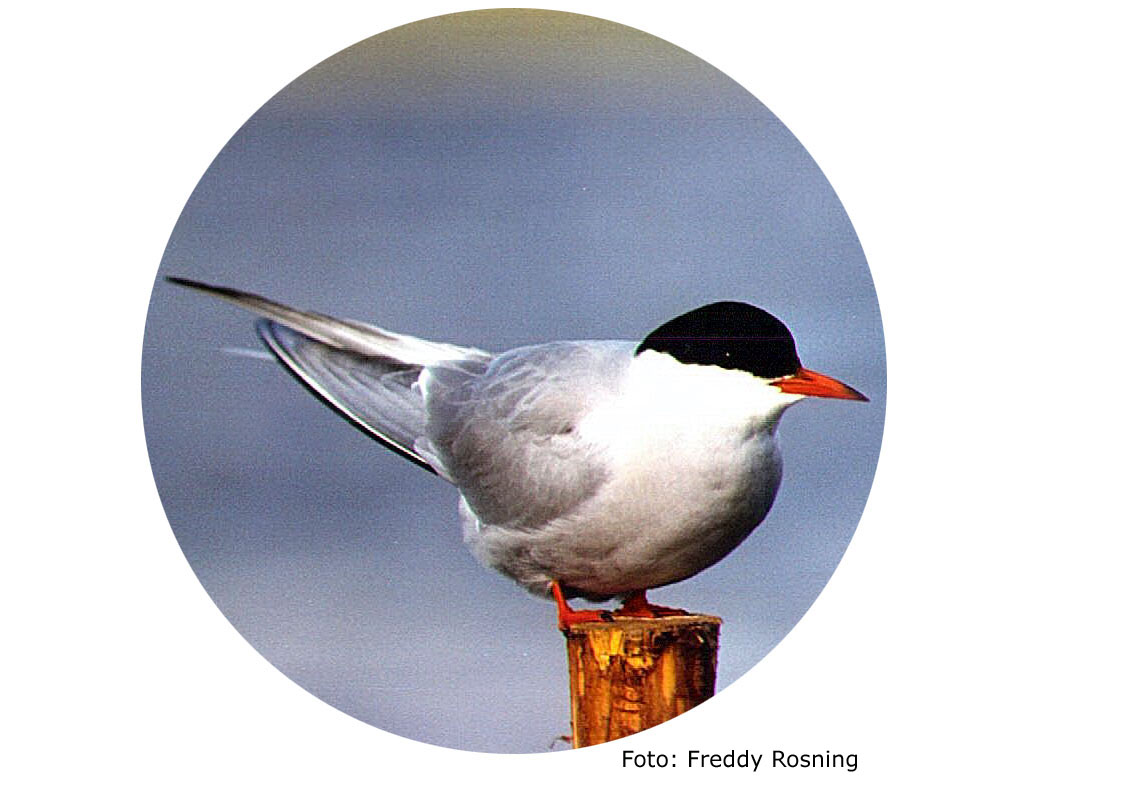
A Common Tern on a net post. Foto: Freddy Rosning.
Roskile Fjord was once one of the Common Tern´s most important breeding sites in Denmark. In the late 1980s over a third of Denmark´s Common Tern bred here, but the numbers have fallen sharply in recent years because of rats and foxes, and possibly a decrease in the numbers of small fish. Several of the Common Tern’s traditional breeding sites have been used as roosting sites by Cormorant since they moved into the fjord. These areas become coated with Cormorant droppings and this has presumably contributed to the terns’ decline.
The Common Tern has bred on pretty well all the islands in the fjord, but if, for some reason, it experiences difficulties with breeding in a certain place, it will move to a new site the following year, and it can be several years before it comes back.
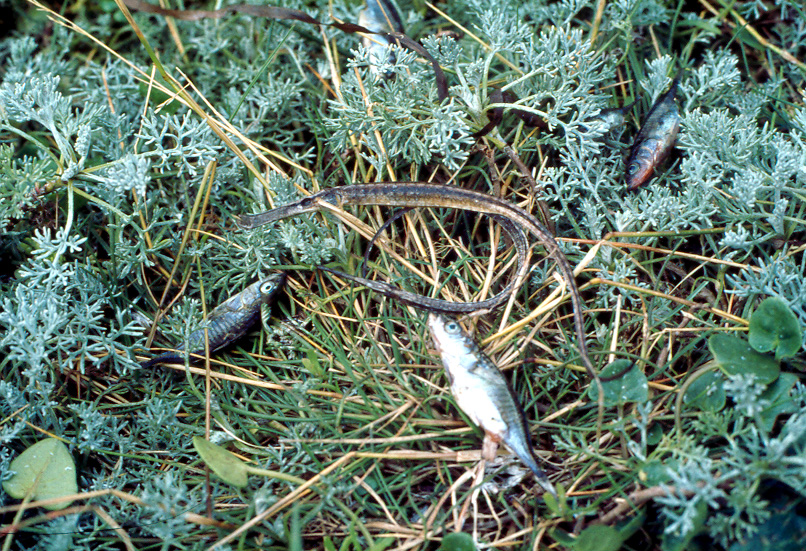
On the menu!
The Common Tern lives for the most part on small fish like Stickleback, Goby and Pipefish, which it dives to catch. This method of fishing is difficult in extremely windy conditions, and as wind and rain are also a strain on the young, wet and windy weather in May and June can cause heavy losses. There are therefore many years when very few young leave the nest, but as Common Tern can live to a good age (10-15 years), they are able to maintain their population.
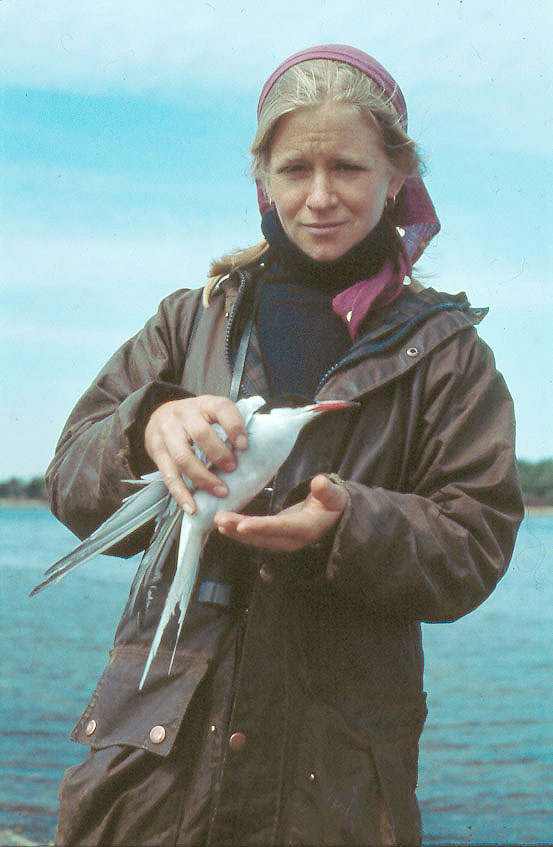
Ringing a Common Tern.
Ringing has revealed that in autumn the Common Tern migrates down the west coast of Europe and Africa. Some spend the winter as far away as South Africa.
The Common Tern is difficult to distinguish from its near relation the Arctic Tern (Sterna paradisaea), which also breeds in the fjord.
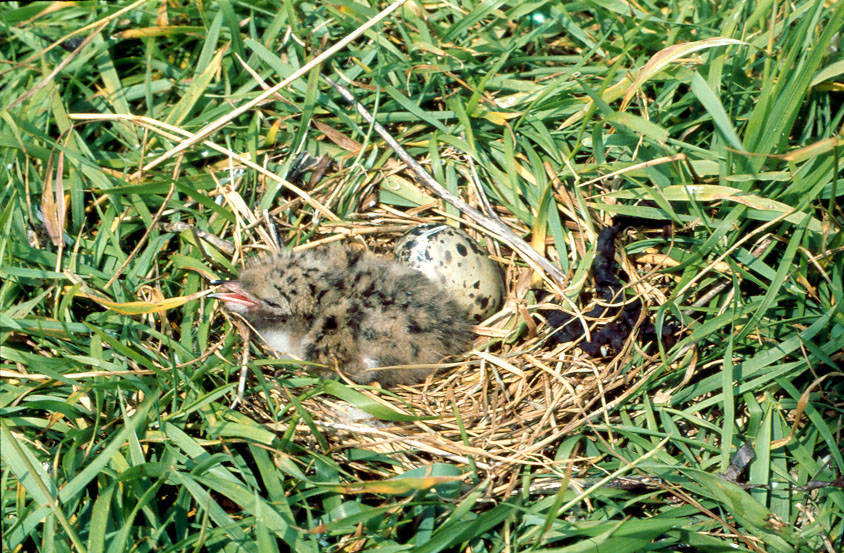
A Common Tern nest.
Key to the Distribution Map.
Common Tern - population trends
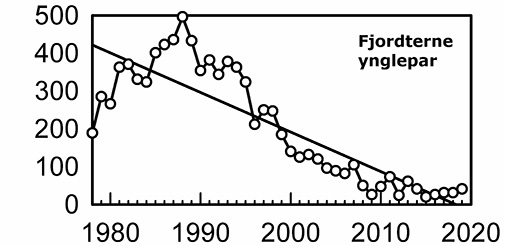
Common Tern breeding pairs
